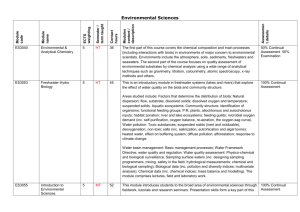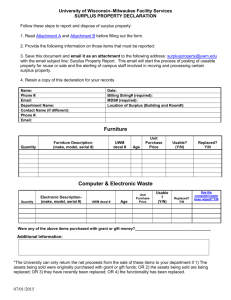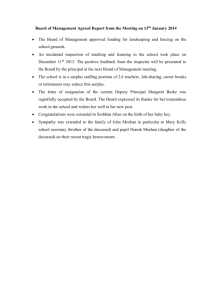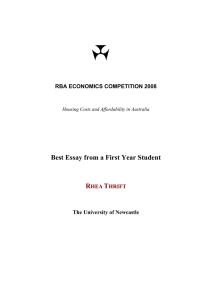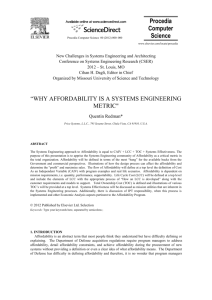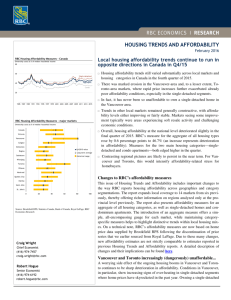Growth Issues – The Broader View
advertisement
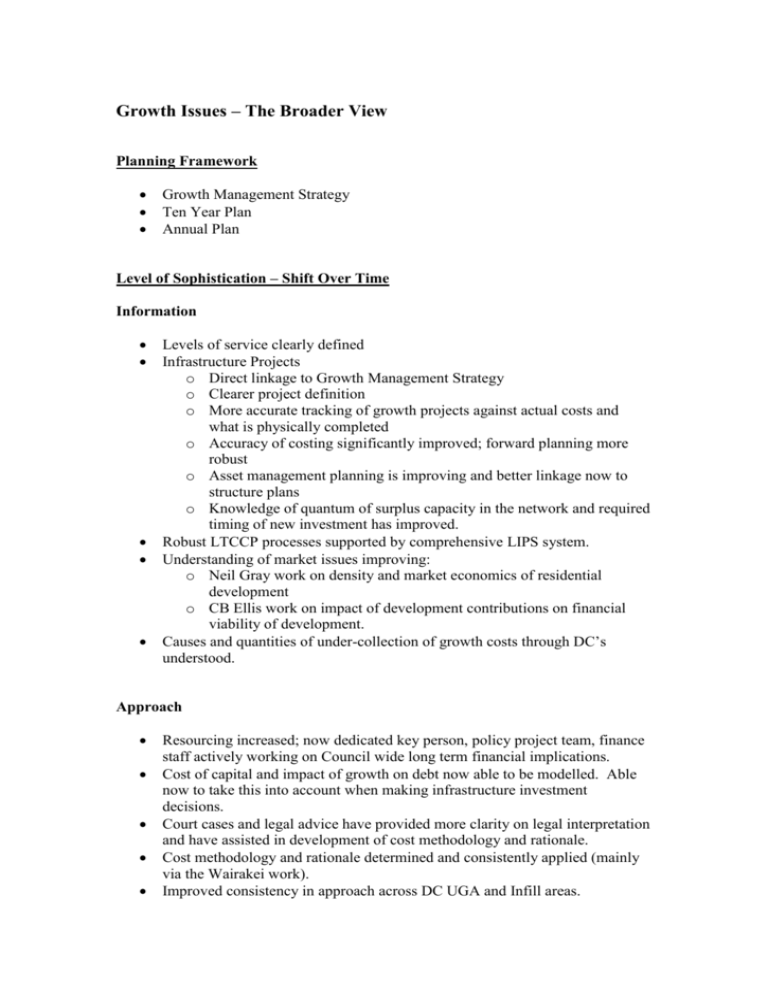
Growth Issues – The Broader View Planning Framework Growth Management Strategy Ten Year Plan Annual Plan Level of Sophistication – Shift Over Time Information Levels of service clearly defined Infrastructure Projects o Direct linkage to Growth Management Strategy o Clearer project definition o More accurate tracking of growth projects against actual costs and what is physically completed o Accuracy of costing significantly improved; forward planning more robust o Asset management planning is improving and better linkage now to structure plans o Knowledge of quantum of surplus capacity in the network and required timing of new investment has improved. Robust LTCCP processes supported by comprehensive LIPS system. Understanding of market issues improving: o Neil Gray work on density and market economics of residential development o CB Ellis work on impact of development contributions on financial viability of development. Causes and quantities of under-collection of growth costs through DC’s understood. Approach Resourcing increased; now dedicated key person, policy project team, finance staff actively working on Council wide long term financial implications. Cost of capital and impact of growth on debt now able to be modelled. Able now to take this into account when making infrastructure investment decisions. Court cases and legal advice have provided more clarity on legal interpretation and have assisted in development of cost methodology and rationale. Cost methodology and rationale determined and consistently applied (mainly via the Wairakei work). Improved consistency in approach across DC UGA and Infill areas. Cost/benefit assessment of growth infrastructure and funding now directly impacting on plan change matters. (Transport workshop example) Stronger linkage to procurement specification and timing (eg decision re first 1000 lots at Wairakei). Opportunity for further improvement through procurement project. Recognition of the need for planning land use, infrastructure and funding in parallel within a concept of a workable market model. (Density which is of a level that enables economic market development while also funding infrastructure). TCC Approaches to Growth Issue Past Present Future Growth Management No growth strategy, many growth fronts open at once. Comprehensive growth management strategy supported by Regional Policy Statement & City Plan. Continual refinement and on-going implementation of growth management strategy. Growth Area Planning Land use, infrastructure planning and funding considered separately and in different timeframes. Land use, infrastructure planning and funding considered in parallel and through an iterative process. Best practice guides together with continued refinement. Growth Rate Average 2 – 3% per annum 1% per annum Average 2 – 3% per annum Capacity in network infrastructure Incomplete information on quantum of surplus capacity. Good knowledge of quantum of surplus capacity in network & required timing of new investment (modelling output). Continual improvement in capacity information. Benefit of unallocated surplus capacity funded by previous ratepayers. Minimal surplus capacity available Significant surplus capacity due to investment in new infrastructure. Council Debt 04/05 $125 million 09/10 $330 million 14/15 $450 million. Access to Finance for developers and home buyers Relatively easy access to finance Finance market has significantly tightened – focus now on ability to repay debt. Likely to ease slightly but still harder to access than in the past. Ability to charge growth costs RMA processes – practical approach taken and reductions incorporated due to cost and time delays of RMA legal processes. LGA processes enable frequent updates to costs and timely implementation of defined charges. Mix of both LGA and RMA (Plan Change 51). Some legal challenges on issues (eg retirement villages, schools). Increased likelihood of further legal challenges as charges increase and profitability reduces. Infrastructure Projects Lack of consistent alignment between infrastructure Direct link to growth management strategy & structure plans project planning & growth. Stronger linkage to procurement specification & timing. Continual improvement. Processes & Resources TYP and DC information managed in Xcel spreadsheets. No integrated systems. Robust and integrated processes & systems (including LIPS & DC sub-module). Continual refinement of systems. Part-time FTE working on DC’s. Increased resourcing. Financial projection ability significantly improvement, particularly in respect of debt projections. DC calculations & Collection: Shortfalls acknowledged but not quantified Cause and quantity of under-collection of DC understood Information used as input into policy decision making. - Cost of Capital Not included. Included Included Included Included Policy decision to recognise the benefit to the community of additional ratepayers in terms of rating base and economic growth. - Inflation Not included Issue Past Present Future - Project cost estimates Generally on lower side as planning not to required level of detail at early stage Accuracy improving and more realistic (higher) project costs included. Long term planning & accuracy between predicted and actual project costs continue to improve. - Actual Costs updated in timely manner Higher actual costs (than projected) not always reflected in timely manner due to lack of sophistication of systems and inability to track individual project information. Actual costs updated on annual basis through LIPS system. Continual improvement, but already well managed. - Cost allocation rationale Minimal legal precedent, inconsistent approach, documentation light. Court cases & legal advice assisted in development of cost methodology / rationale. Continual improvement. Internal policy team has developed strong rationale and now well documented. Improved consistency Affordability Not a major issue for developers or purchasers. No affordability adjustment on DC’s Affordability a significant issue for both developers & purchasers. Interim affordability adjustment on West Bethlehem Affordability unlikely to improve unless section prices reduce significantly and high density development occurs. Affordability adjustment options include discounted DC charges and targeted rates. These would provide some recognition of the benefits growth brings to overall financial sustainability. Understanding of market issues Minimal Improving particularly through: Neil Gray work on density & market economics CB Ellis work on impact of DC’s on financial viability of development. Development Working Party. Housing for Future Working Party. Further work required in this area.
